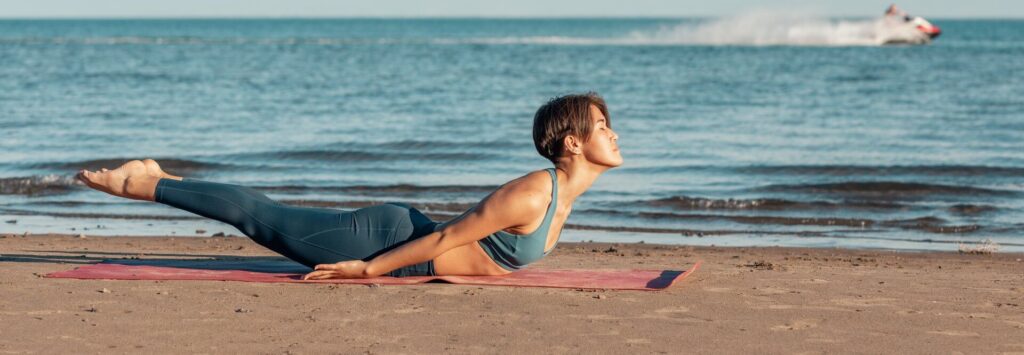“Just as the locust emerges from the earth, we too can rise from our difficulties in Salabhasana.”
Locust Pose, known as Salabhasana in Sanskrit, is a fundamental yoga posture that bridges the gap between beginner and intermediate poses. It focuses on strengthening the back, legs, and core while enhancing spinal flexibility.
Locust Pose – Salabhasana (Beginner to Intermediate)
Salabhasana Meaning
The name “Salabhasana” comes from the Sanskrit words “Salabha,” which means “grasshopper” or “locust,” and “Asana,” which means “pose.” The pose symbolizes the upward lift and strength of a locust taking flight.
Benefits Locust Salabhasana
Locust Pose (Salabhasana) offers numerous benefits for both body and mind:
- Back Strength: It strengthens the muscles along the spine, promoting better posture and spinal health.
- Leg Strengthening: The pose engages and tones the muscles of the legs, including the hamstrings and glutes.
- Core Activation: Locust Pose activates the core muscles, building strength in the abdominal region.
- Improved Posture: Practicing this pose can improve overall posture and alignment.
- Stress Reduction: It can help alleviate stress and tension by promoting mindfulness and focus.
Step-by-Step Instructions Locust Pose

- Starting Position: Begin by lying flat on your stomach with your arms resting alongside your body, palms facing up.
- Forehead to Mat: Rest your forehead on the mat to keep your neck in a neutral position.
- Leg Engagement: On an inhalation, lift your legs off the ground, keeping them straight and engaged. Imagine lengthening through your toes.
- Arm Lift: Simultaneously, lift your upper body off the mat by engaging your back muscles. Extend your arms straight forward, parallel to the ground.
- Squeeze Shoulder Blades: Squeeze your shoulder blades together as you lift your upper body to open the chest.
- Hold and Breathe: Hold the pose for 20-30 seconds, breathing steadily and maintaining engagement in your back, legs, and core.
- Release with Control: Lower your legs and upper body down to the mat with control as you exhale.
Locust Pose Variations and Modifications
If you have difficulty lifting both your upper and lower body simultaneously, you can begin by lifting one leg and the opposite arm at a time. To further engage your core, you can lift your legs and upper body higher, creating a deeper backbend.
Tips for a Deeper Practice
Focus on lengthening your body in both directions: toes reaching away from your head, and fingers extending forward. Keep your neck in a neutral position, looking down at the mat to avoid straining the neck. Engage your core muscles throughout the pose to support your lower back.
Preparation Poses Salabhasana
- Cobra Pose (Bhujangasana): Begin your practice with Cobra Pose to warm up the back and prepare for backbends.
- Bridge Pose (Setu Bandha Sarvangasana): Bridge Pose can help activate the glutes and strengthen the back, making it a useful preparation for Locust Pose.
Locust Pose Alternatives
- Child’s Pose (Balasana): After practicing Locust Pose, relax in Child’s Pose to release any tension in the lower back and stretch the spine in the opposite direction.
- Downward-Facing Dog (Adho Mukha Svanasana): Downward Dog can help realign the spine and stretch the entire body.
Final Thoughts

Locust Pose (Salabhasana) is an essential yoga posture that offers a range of physical benefits, including back strengthening, leg toning, and core activation. It serves as a bridge between beginner and intermediate poses, making it accessible for most practitioners. Incorporate this pose into your practice to enhance your back strength, improve posture, and promote overall physical well-being. Embrace the strength of the locust and let your practice take flight with Salabhasana.


